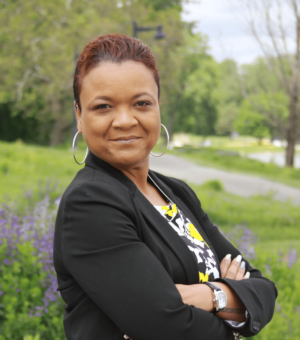Support people who have experienced or are at risk of domestic violence and sexual assault
Updated June 14, 2021
The COVID-19 pandemic has shed light on critical gaps in services and supports for people who have experienced or are at risk of domestic violence and sexual assault. Comprehensive solutions are needed—both within the criminal justice system and local communities—that support the safety and security of survivors. Nearly $11 billion of American Rescue Plan (ARP) funding provides opportunities for responsive, community-based, and culturally specific supports for people who have experienced domestic violence or sexual assault.
Funding Breakdown
| Name | Total Amount | Description | Administering Agencies | Eligible Entities | Distribution Mechanisms
|
End Date |
| Programs for Survivors, Family Violence Prevention Services Act (FVPSA) | $427.5 million | Support domestic violence and sexual assault survivors through:
1. $180 million for emergency shelter, housing, or other emergency supports in each state and territory; $18 million of this is specifically allocated for tribal entities 2. $198 million for survivors of sexual assault 3. $49.5 million for culturally specific services *The usual 20% match for FVPSA funds does not apply |
Department of Health and Human Services (HHS) | States, territories, and tribes | Formula grant to states (70%), Tribes and Tribal organizations(10%), state domestic violence coalitions (10%), training and technical assistance centers(6%), Specialized Services for Abused Parents and their Children(1.5%), program administration and monitoring (2.5%). Detailed instructions available for formula and discretionary grantees | Retroactively available from March 15, 2021, through September 30, 2025 |
| Child Abuse Prevention and Treatment | $350 million | Support programs promoting child safety from abuse through:
1. $100 million for CAPTA Title I Grants supporting state child protective service programs 2. $250 million for CAPTA Title II community-based child abuse prevention programs |
HHS | States, local governments, and nonprofit agencies | Formula grant. Detailed application instructions and allotted funding are available via the Administration for Children and Families | September 30,2023 |
| Emergency Housing Vouchers | $5 billion | Expand emergency housing vouchers and service funding to local Public Housing Authorities (PHAs) to increase access to permanent housing, including for survivors of domestic violence and human trafficking, and people experiencing or at risk of experiencing homelessness. Service funding may be used for security deposits, utility assistance, unit owner outreach/incentives, and other costs essential to securing housing. In most cases, eligible households must be referred via the local Continuum of Care Coordinated Entry process.[1] | Department of Housing and Urban Development (HUD) | PHAs | Formula allocation. Webinars and open office hours for providers are offered via HUD. | September 30, 2030 |
| Homelessness Assistance and Supportive Services Program (through the HOME program) | $5 billion | Develop affordable housing and supportive services, provide for tenant-based rental assistance, and acquire non-congregate shelter spaces. Targeted toward people experiencing or at risk of homelessness, sexual, or domestic violence, as well as veterans. | HUD | States and local jurisdictions | Formula allocation to city governments (60%) and state governments (40%). HUD has released a full grantee list | September 30, 2025 |
| Emergency Assistance to Families through Home Visiting Programs | $150 million | Assist in trainings for intimate partner violence screenings and provide safety planning and familial supports in cases of domestic violence, with an emphasis on serving high-risk and culturally specific communities. | Treasury | Maternal, Infant, and Early Childhood Home Visiting Programs (eligible under Sec. 511) | Formula grant. Afull list of awardees and funding is available via the Maternal, Infant, and Early Childhood Home Visiting Program.
|
September 30, 2022 |
1A Continuum of Care (CoC) is a local planning entity that, among other activities, receives homeless assistance funding for housing and supportive services from HUD, prioritizes housing and services projects for funding, and coordinates intake and prioritization of people for housing and shelter placements. HUD requires that all CoCs maintain a Coordinated Entry System, a unified system of intake and prioritization that governs access to all housing and supportive service resources under the CoC’s jurisdiction.
The ARP provides for an additional $350 billion in State and Local Fiscal Recovery Funds for communities to address local fiscal priorities in response to the pandemic. Learn more about how to use these funds to advance safety and justice goals in our guide. State, local, and tribal governments can request recovery funds directly through the Treasury’s website.
Key Takeaways
- Expand community-based efforts outside of the criminal justice system: Several ARP provisions focus on community-based solutions for combatting domestic and sexual violence, such as partnering with local organizations on prevention and intervention strategies, as well as using technology to support survivors. This emphasis on community-led efforts is vital for survivors who are seeking supports outside of the criminal justice system.
- Establish a multi-system approach to addressing domestic violence: People who experience domestic violence often experience other, overlapping behavioral health and social service needs, such as mental illness, homelessness, or substance use disorders. Given that domestic violence often intersects with these other issues, there is a strong need to integrate social service systems to ensure that people are connected to appropriate treatment and resources.
- Increase cultural responsiveness in domestic violence services: People who experience domestic violence come from all different backgrounds, races, ethnicities, and religions, and can experience abuse in culturally specific ways. The ARP’s focus on culturally specific services for different populations highlights a systemic need for responsive programming in both community-based and criminal justice solutions. Jurisdictions should focus funding on implementing best practices that address the specific challenges faced by individuals across different communities.
Other Resources
- Helping States Support Victims
- Provides strategies for states to develop long– and short-term strategies to improve mechanisms for helping victims of crime and violence
- Casa de esperanza
- Leader in the domestic violence movement with Latino communities to end domestic violence through research, public policy, training, and community resources
- National Alliance to End Sexual Violence
- National network of statewide anti-sexual violence organizations, providing resources and policy advocacy
- National Child Abuse Coalition
- National coalition of organizations participating in legislation and education on issues of child abuse and neglect
- National Coalition Against Domestic Violence
- National coalition aiming to mobilize, educate, and advocate for issues and conditions contributing to domestic violence
- National Network to End Domestic Violence
- A social change organization providing training and assistance to statewide territories and state domestic violence coalitions
- National Organization of Sisters of Color Ending Sexual Assault
- Women-of-color nonprofit supporting, advocating for, educating, and collaborating with women of color to address the multiple layers of discrimination faced by women of color
- National Sexual Violence Resource Center
- Leading nonprofit providing leadership, information, and tools to prevent and respond to sexual violence
- UJIMA
- The national center on violence against women in the Black community, providing resources on training, technical assistance, resource development, research, and public policy
Share Your Feedback
We would like to learn more about your plans to use American Rescue Plan funds to advance safety and justice priorities. Take our five-minute survey to help us better understand your community’s questions, plans, and needs.
About the Authors














